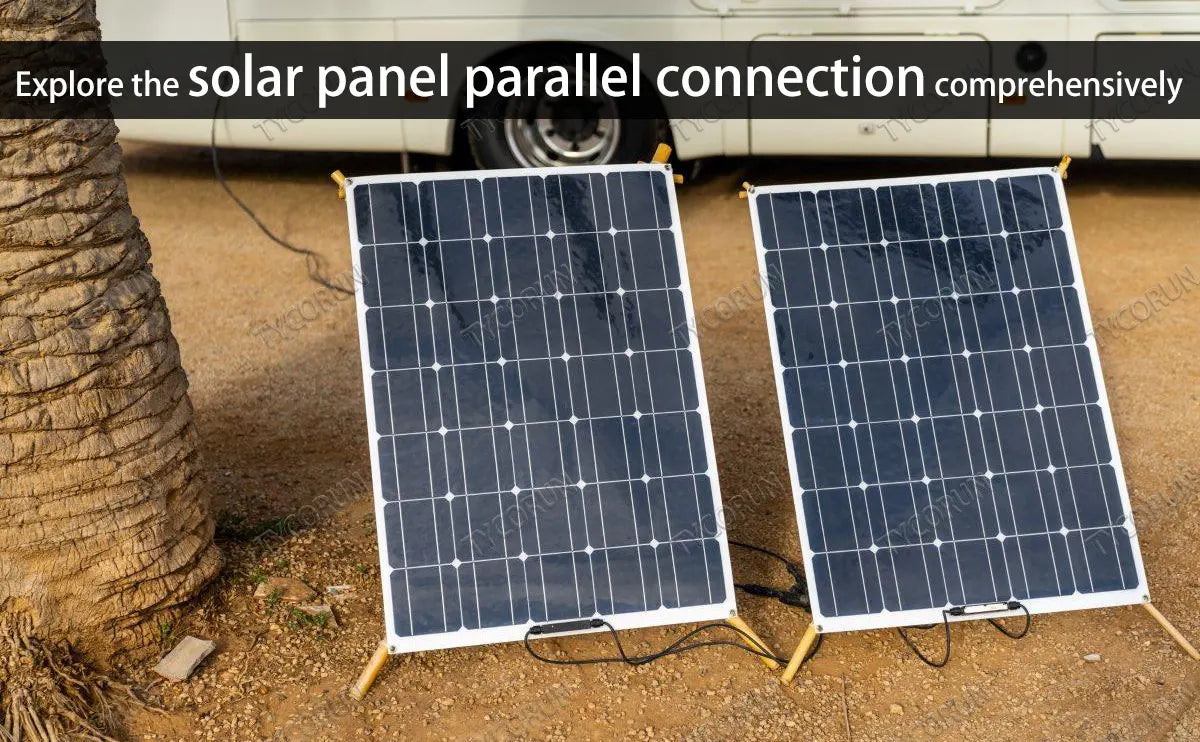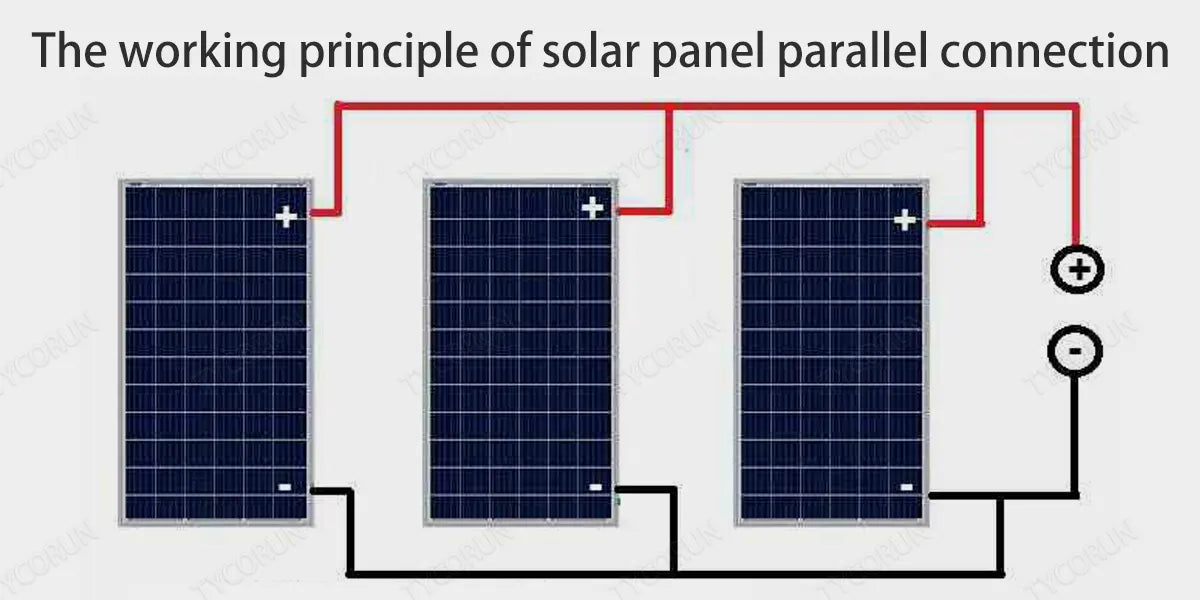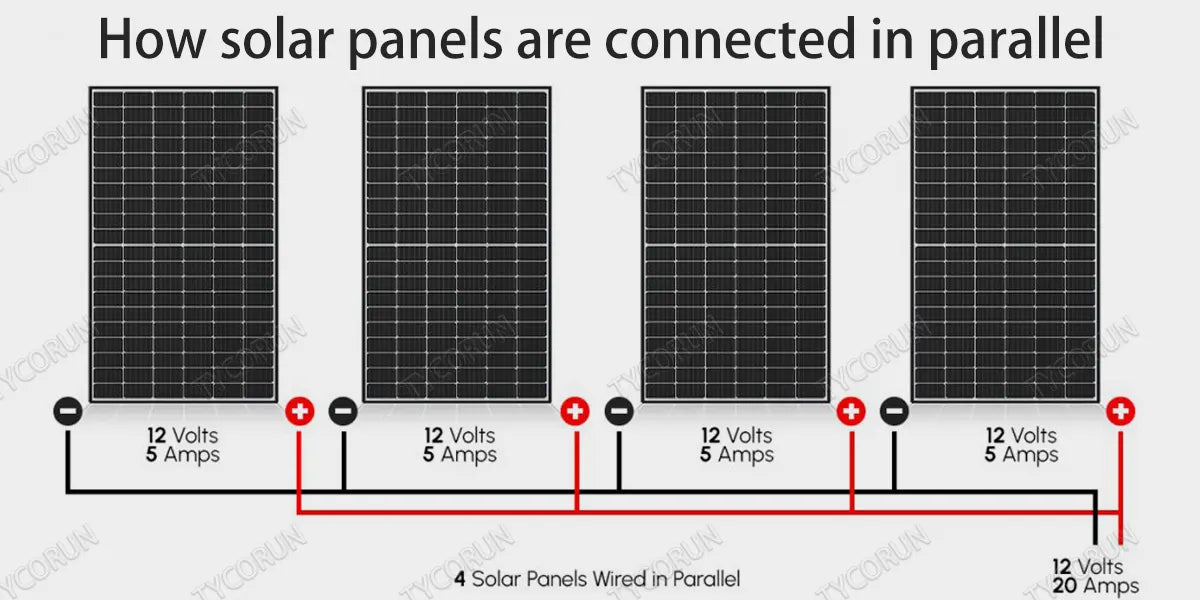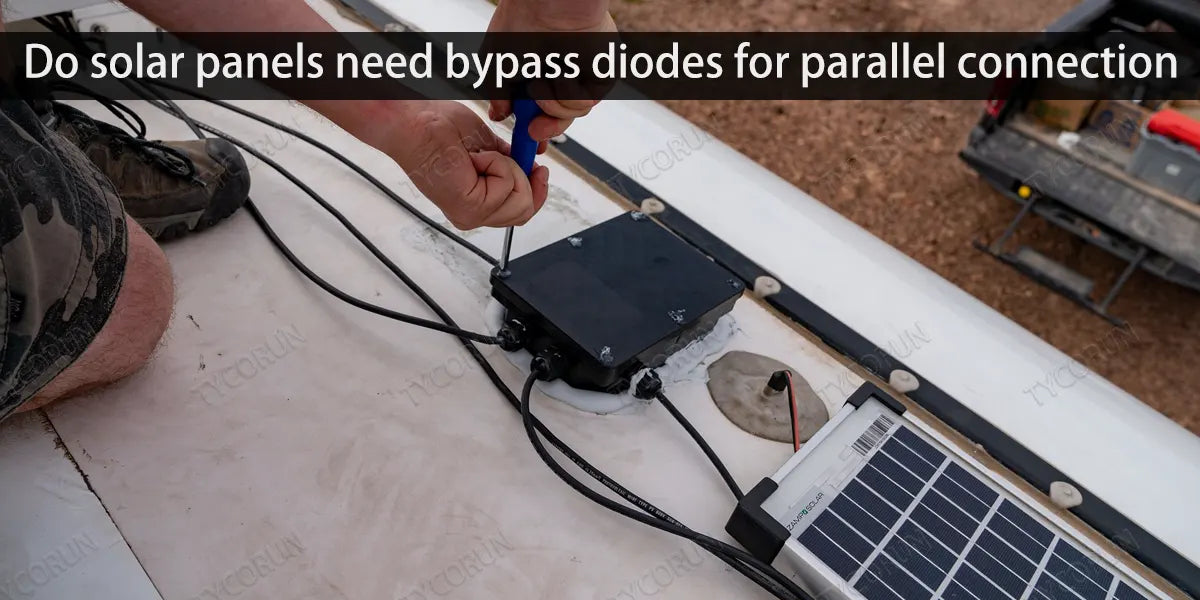
Main content:
Solar panel parallel connection is to connect the cathode and anode of multiple solar panels together to form a large solar panel group, thereby increasing the capacity of solar power generation.
1. What is solar panel parallel connection
Solar panel parallel connection is to connect the anode and the cathode of multiple high efficiency solar panels to the cathode, forming a current shunt loop. The solar panel parallel connection can increase the total current of the system, but the voltage remains the same.
This means that when one solar panel is shaded or malfunctioning, the other solar panels connected in parallel can still provide current. The output current of the system will not be significantly affected, but the output voltage of the entire system may drop.
2. The working principle of solar panel parallel connection
The principle of solar panel parallel connection is based on Ohm's law and Kirchhoff's law. Ohm's law specifies the relationship between resistance, current, and voltage, that is, current is equal to voltage divided by resistance.
Kirchhoff's law is an extension of the energy conservation law, which quickly calculates the current and voltage distribution in a circuit to determine the circuit diagram and combination of solar panel parallel connection.

Solar panel parallel connection can superimpose the currents of multiple solar panels, increasing the overall power generation capacity. When multiple solar panels are connected in parallel, the overall voltage remains the same, but the overall current increases.
3. Advantages and disadvantages of solar panel parallel connection
● Merits- Improve the efficiency of power generation. In the case of full sunlight, multiple solar panel parallel connection can achieve higher power generation efficiency.
- Increased system stability, when a single solar panel is affected, the entire system is not completely damaged.
- The flexibility to configure the number of solar panels and the connection method according to specific needs increases the suitability of the system.
● Shortcomings
- Poor matching, if the electrical performance of solar panels varies greatly, then the power generation effect after parallel connection will be affected.
- System stability is poor. After the solar panels are connected in parallel, the stability of the system will be affected, such as rainy weather or failure, the whole solar panel system.
- The cost is high, and solar panel parallel connection requires the use of expensive electrical components, which increases the cost of the system.

It is important to note that the choice of series and parallel connections should be determined according to the specific application requirements and system design. Series connections are suitable for applications that require higher voltages, such as grid connection systems.
Parallel connections are suitable for applications that require higher currents, such as charging systems. In practical applications, a series-parallel hybrid connection can also be used to balance the voltage and current requirements.
4. How solar panels are connected in parallel
- Determine if the solar panel voltage is the same, and if the same is the same, it can be connected in parallel.
- Connect the anode and cathode of the solar panel with two wires.
- Then take the wire out from the cathode and anode of a board and connect it to the cathode and anode of the controller.
- At the same time, the 12 volt 100ah deep cycle lithium battery and the control element should be connected to the circuit and the connection is completed.
Wiring: Red line, anode level of all equipment. The blue line, the cathode pole of the solar panel. The black wire, the cathode pole of the battery. Green, the cathode pole of the street lamp.
Solar cell: PV controller – battery – DC load.
Two solar panels can be connected in series, doubling the output voltage. If you want the current to increase and the voltage to remain unchanged, you can carry out solar panel parallel connection.
However, since the light receiving program of the two solar panels is not necessarily the same, the power generation voltage will also vary. Therefore, a diode must be added to the parallel connection to prevent the current from backflowing.

A thin sheet of optoelectronic semiconductors that generate electricity directly from sunlight. A single solar battery cannot be used as a power source. As a power source, several individual solar cells must be connected in series, parallel and tightly encapsulated into modules.
Sunlight shines on the p-n semiconductor junction, forming new hole-electron pairs. Under the action of the p-n junction electric field, holes flow from the p-region to the n-region, and electrons flow from the n-region to the p-region, and a current is formed when the circuit is turned on. This is how photoelectric effect solar cells work.
5. Do solar panels need bypass diodes for parallel connection
Do solar panels need bypass diodes for parallel connection? The answer to that question is yes. With the popularity of solar photovoltaic power generation, solar panel parallel connection has become a common method of large-scale photovoltaic power generation.
However, if a solar panel bypass diode is not added, the battery board may experience reverse currents, resulting in voltage drops, power loss, and even device damage. Therefore, the need for bypass diodes must be taken into account in the parallel design of solar panels. The role of the bypass diode is to pass current through the solar panel under normal conditions and avoid damage to the panel when reverse current occurs.
Typically, these diodes are mounted at the output end of each battery pack. When current flows from one bank to another, the forward bias direction of the diode will result in only the forward bias current flowing to the anode offset battery pack. In the parallel design of solar panels, anti-reflective diodes also need to be considered.
The role of anti-reflection diodes is to prevent the solar panel from generating reverse currents and to protect the safe operation of electronics. This diode is specifically designed for transient protection, it can be accelerated at reverse voltage, and it can protect the circuit from overvoltage or overcurrent damage.

Therefore, the acceptance of anti-reflection diodes is essential for the safe operation of solar panel parallel connection. Anti-reflective diodes are connected differently from bypass diodes. Anti-reflective diodes must be connected in parallel to the output of the solar panel to ensure that the reverse current can be transient quickly and avoid damage to the device, while following the following practices.
First, connect the cathode of the protective diode to the output of the solar panel, and connect its anode to the cathode and anode poles of the solar panel. In this way, in the event of a reverse current, the reverse diode will accelerate the switching, preventing the reverse flow of current and protecting the 12 volt 200ah lithium battery from voltage damage.
Second, reusable circuit breakers need to be incorporated into the circuit to protect electronics. In the event of a transient overload or short circuit, the reusable circuit breaker can quickly disconnect the parallel circuit of the battery board to prevent any potential damage.
In summary, both bypass diodes and anti-reflective diodes are necessary in the parallel design of solar panels. Bypass diodes protect the battery board from damage by avoiding reverse currents, while anti-reverse diodes can help with fast transients, prevent reverse currents from being generated by battery plates, and protect the safe operation of electronics.
With these simple but important circuit designs, solar panels can be used smoothly in parallel, thereby improving environmental quality, reducing energy costs, and contributing to sustainable development.
6. Conclusion
Solar panels can be connected together in series to increase the output voltage (V), or they can be connected in parallel(solar panel parallel connection) to increase the output current (A) value. It can also be connected together in a combination of series and parallel to increase the output voltage and current, producing a higher power array.
Related articles: off grid solar batteries, solar panel wiring, how to clean solar panel
















